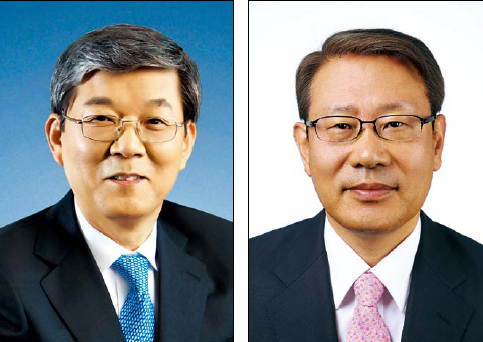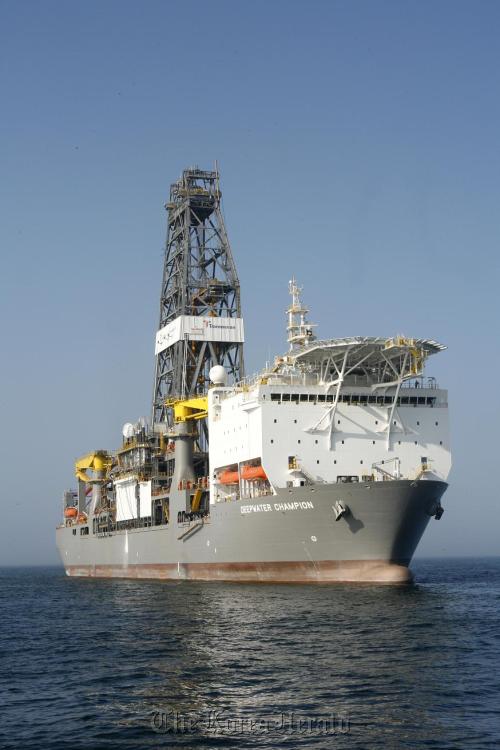
Korean shipbuilders dominate global market with Hyundai Heavy challenging Samsung
The competition in the market for drillships is heating up with Hyundai Heavy Industries Co. threatening Samsung Heavy Industries Co.’s dominance.
As drillships represent something of a golden egg for shipbuilders, a drillship typically costing more than $500 million, Hyundai Heavy has turned its eyes to the market in recent years.
The company’s first drillship was delivered late last year.
In addition to being highly valuable, drillships require cutting edge technology, effectively barring newcomers from the market.
The competition in the market for drillships is heating up with Hyundai Heavy Industries Co. threatening Samsung Heavy Industries Co.’s dominance.
As drillships represent something of a golden egg for shipbuilders, a drillship typically costing more than $500 million, Hyundai Heavy has turned its eyes to the market in recent years.
The company’s first drillship was delivered late last year.
In addition to being highly valuable, drillships require cutting edge technology, effectively barring newcomers from the market.

With few shipbuilders capable of building such vessels, the world market has been dominated by Samsung Heavy and its Korean competitors.
According to industry sources, while there are overseas shipbuilders with the technological capacity to build drillships, their capabilities are limited, making Korean shipbuilders effectively the only choice for would-be drillship operators.
Within this relatively niche market, Samsung Heavy has been at the top of the drillship game for more than a decade.
The company won its first order for a drill ship in 1996, and took seven of the 12 orders for such vessels issued between then and September 1998.
Samsung Heavy continued to maintain the top spot in recent years, taking 39 of the 72 contracts for drillships issued since 2005.
This year’s market, however, has shown one significant difference from previous years.
In a departure from the rankings maintained for more than a decade, Samsung Heavy has lost its place at the top of the drillship market to Hyundai Heavy. Of this year’s 20 drillship orders, nine were won by Hyundai Heavy, while Samsung Heavy took seven. The remainder were awarded to Daewoo Shipbuilding and Marine Engineering Co.
By value, Hyundai Heavy is outpacing Samsung Heavy by nearly $1 billion. The value of orders won by Hyundai Heavy stands at $5 billion, while that of Samsung Heavy’s orders stand at $4.04 billion.
“There are no fundamental technological differences between the three companies. So, with Hyundai Heavy now actively competing in the market, the structure of the three-way market share is unavoidable,” SK Securities Co. analyst Lee Ji-hoon said. He added that shipbuilders tend to focus on specific types of vessels depending on market conditions.
“In the past Samsung Heavy focused on drill ships, but with Hyundai Heavy offering better conditions, ship owners now have no reason to not give contracts (to Hyundai Heavy).”
Hyundai Heavy, however, disagrees that its ships have no edge over the competition.
“Drillships built by other shipyards tend to resemble modified oil tankers, but Hyundai Heavy’s drillships have a specific design that includes a narrower hull, and when ships are smaller, the maintenance costs go down,” a Hyundai Heavy official said.
“In addition, other drillships need to go into a port if the thruster needs repairs, but our ships are designed so that the thruster can be pulled up aboard and repaired while at sea, allowing ship owners to avoid unnecessary costs going into port.”
Thrusters are equipment designed for keeping the vessel steady during drilling, making them essential on drillships.
While the competition is heating up, the market for drillships is also expected to grow leaving room for expansion for both sides.
“This year the volume (of orders for drillships) has been pushed up as orders that did not come in 2009 and 2010 came this year. So, the volume will not be maintained at this level,” Lee said.
“But, the trend will be that, due to high oil prices, there will be a steady demand for drill ships in the future.”
By Choi He-suk (cheesuk@heraldcorp.com)








![[KH Explains] How should Korea adjust its trade defenses against Chinese EVs?](http://res.heraldm.com/phpwas/restmb_idxmake.php?idx=644&simg=/content/image/2024/04/15/20240415050562_0.jpg&u=20240415144419)










![[Today’s K-pop] Stray Kids to return soon: report](http://res.heraldm.com/phpwas/restmb_idxmake.php?idx=642&simg=/content/image/2024/04/16/20240416050713_0.jpg&u=)